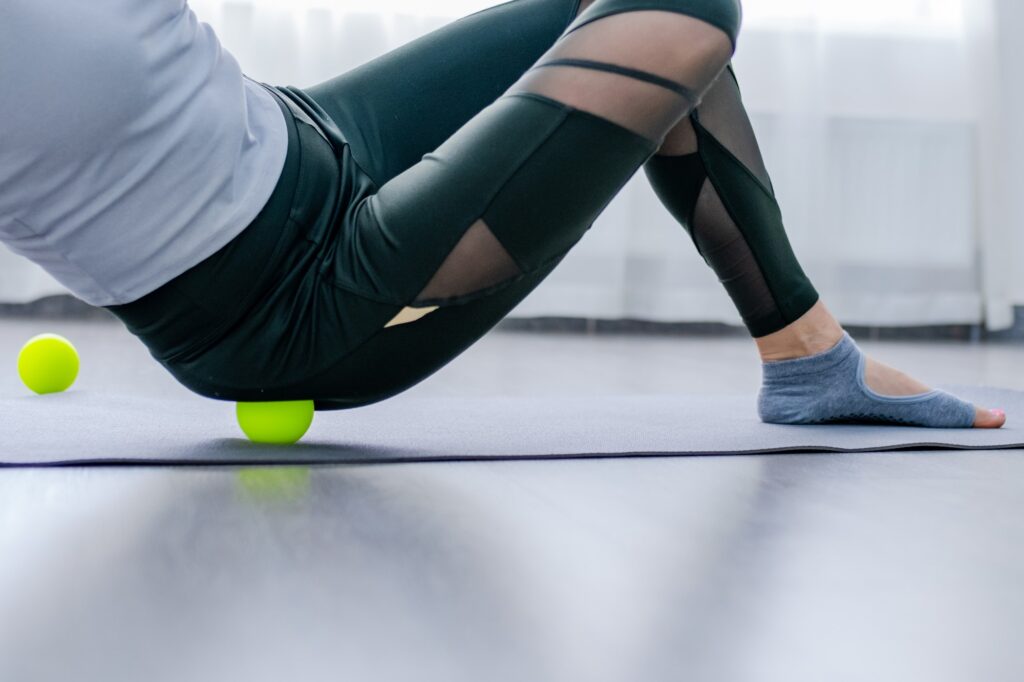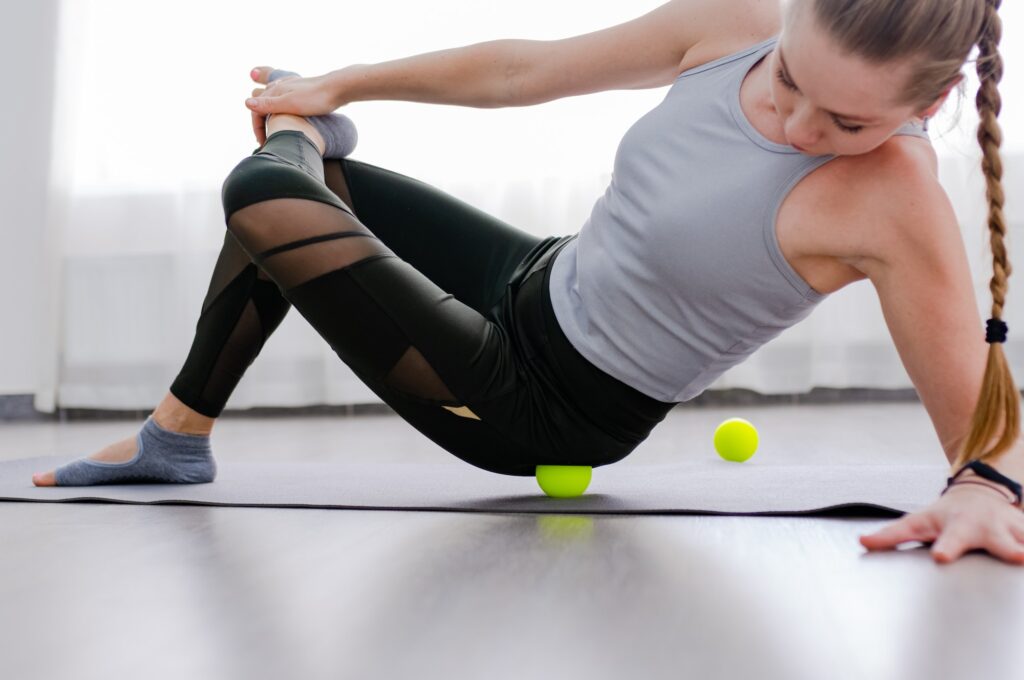Got tight muscles? Back pain? Or chronic migraines? You might benefit from myofascial release techniques and tools. Myofascial release (also known as MFR) can help relieve tightness and pain, helping you move without restrictions holding you back. In fact, this is a type of manual therapy used by physical therapists, massage therapists, and chiropractors to help individuals overcome injuries and chronic pain, such as that associated with fibromyalgia.
Yet, myofascial release isn’t limited to those with pain. There’s also other forms of myofascial release, including self-myofascial release. So, let’s take a closer look. What is myofascial release exactly? When and why should you use it? And how can you add it into your regular routine?
What is MyoFascial Release?
Myofascial release is a technique that targets the fascia, a type of connective tissue that surrounds all of the muscles throughout your body. So, how does myofascial release work exactly? Frequently used in massage therapy, chiropractic care, and physical therapy to help with low back pain and other myofascial pain, this technique involves moderate sustained pressure applied by the hands or a tool to parts of the body experiencing trigger points.

This pressure releases these trigger points and adhesions (which often occur due to the build-up of scar tissue after an injury), allowing the muscles and soft tissues to move freely. In turn, myofascial release therapy can provide pain relief for a variety of conditions, such as carpal tunnel syndrome, lower back pain, neck pain, poor posture, myofascial pain syndrome, and other issues or injuries that limit range of motion or cause muscle soreness.
And the research 100% backs up the efficacy and efficiency of this technique. A systematic review of numerous studies on myofascial trigger points demonstrated how myofascial release therapy is a viable treatment for restoring function, improving range of motion, and decreasing pain for a variety of conditions. It’s no surprise why this is a common practice used by a variety of sports medicine practitioners today.
When Should You Use Myofascial Release?

Myofascial release is frequently used by gym-goers and athletes pre and post-workout. It can help release muscle tightness, preventing soreness and accelerating recovery.
However, myofascial release isn’t right for everybody. If you’ve recently experienced an injury, myofascial release can actually cause more harm than good. For example, using moderate pressure over top of a muscle tear isn’t recommended.
The type of myofascial release therapy you use may also depend on your mobility and fitness level. If you’re quite fit, you might be able to easily perform self-myofascial release with a foam roller or other tool. However, if you’re new to fitness and have mobility issues, it’s probably best to leave it to the professionals or at least, allow them to show you the ropes.
What is Needed For It?
If you can’t afford to visit a sports medicine practitioner or find it inconvenient to fit into your schedule, the good news is that you don’t have to necessarily spend tons of money to benefit from myofascial release.
Self-myofascial release can easily be performed at home with the use of the following myofascial tools:
- Foam rollers
- Percussion massage guns
- Lacrosse/Massage balls
- Compression boots
- Massage sticks

For a simple one-time cost, you can reap thousands of dollars in benefits, as well as prevent injury and time spent away from your sport of choice. In particular, foam rollers are ever-popular and ultra-affordable. You can find these online or at most big box stores, such as Walmart or local superstores. With foam rollers, you’ll also find different types, textures, and sizes. If you’re first time using one, we recommend sticking with the simple and smooth foam cylinder foam roller.
How to Do It Properly, Technique, and Common Mistakes
When performing myofascial release, you want to find a way to apply sustained and moderate pressure. For a foam roller, this often involves lying perpendicular overtop of it and using your body weight and gravity to provide adequate pressure. For a lacrosse or massage ball, this may mean using a wall, specifically to target areas in the upper back or shoulders.
Once you’ve found an easy way to apply pressure to your trigger points, you want to roll back and forth over the same spot for 30 seconds to a minute (or more, if you can handle it!). Always make sure you listen to your body. Some pain is okay, as long as it feels as though you’re releasing something. Pain that is unbearable and really uncomfortable is a sign you’re doing something wrong or maybe that myofascial release isn’t right for you right now (and it might be best to visit your local sports medicine clinic).
You can use myofascial release during your active recovery days or immediately post-workout, as well as whenever you feel tension or tight spots in certain muscles. In fact, being able to perform effective self-myofascial release techniques can even save you money spent on massage therapists and physical therapists, as well as save you time dedicated to injury recovery.
Did You Know?
- There is a common belief that the fascia holds onto emotional memories. This means that stress and other emotional events can lead to tension and trigger points in this tissue (but it can be relieved via the use of myofascial release techniques!).
Final Thoughts…
Myofascial release techniques can help decrease dysfunction, reduce pain, improve range of motion, and more. It can be ultra-beneficial for post-workout recovery, as well as for improving overall mobility by eliminating fascial restrictions. Add this technique to your cool down or rest days for an additional boost. Alternatively, you can always ask your massage therapist about this technique at your regular appointment, and they can determine whether or not it makes sense for you.

